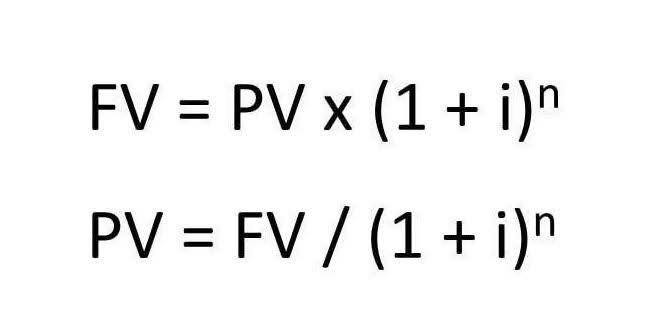
The existence assertion is that any assets and liabilities recorded in the financial statements actually exist. Similarly, it includes a claim that there is no overstatement in reporting these items. Recalculation is the process of re-compute the work that the client has already done to see if there are different results between auditor’s work and the client’s work. This type of audit procedures is usually used to test the valuation and allocation assertion of the financial statements.

What Are Audit Assertions and Why They Are Important
It benefits almost all the stakeholders, including analysts, regulators, investors, and creditors. These assertions play an important role in a company’s trustworthiness, performance, and financial health, allowing informed decisions on investment by investors. Jasmin had asserted the existence and evaluation of the firm’s products to make them presented fairly. Meanwhile, Jackyn, the auditor, focuses on verifying and substantiating the assertions of Jasmin to instill investor and stakeholder confidence. It also tried to comply with regulations throughout the dynamic landscape of Loolaland. Type 1 audits cover the same areas; however, the auditor’s opinion only addresses the suitability of the design of controls at a point in time.

What are Assertions in Auditing?
- For instance, confirming the existence of inventory through physical verification or validating transactions by reviewing contractual agreements.
- It mentions how it’s important for the amounts and other relevant data for the truncations to be recorded in an appropriate manner.
- Existence or occurrence assertions confirm that assets, liabilities, and transactions recorded have actually occurred and pertain to the entity at a given date.
- Such claims have become necessary for analysts and investors to assess a company’s financial status.
- As a result, it may present a company’s misleading or inaccurate financial health, negatively impacting investors and analysts.
- Another significant challenge is the inherent subjectivity in certain financial estimates and judgments.
- The existence assertion verifies that assets, liabilities, and equity interests recorded in the financial statements actually exist at a given date.
Since external stakeholders predominantly rely assertion audit on financial statements to gauge the efficacy of the said organization. Therefore, these audit assertions tend to be important because they tend to provide effective proof regarding the authenticity and accuracy of the financial statements. Without these assertions in place, it is considerably harder for stakeholders to comprehend the financial statements. When performing an audit, it is the auditor’s job to obtain the necessary evidence to verify the assertions made in the financial statements. Whether you’re using accounting software or recording transactions in multiple ledgers, the audit assertion process remains the same.
Techniques for Testing Assertions

Usually, they rely on the information presented in those statements for decision-making. Similar to existence, occurrence is used to verify law firm chart of accounts that recorded transactions have actually occurred. Rather than using an inefficient approach—let’s audit everything—the auditor pinpoints audit procedures.
- Internal controls allow accurate records of transactions, lowering the risks of fraud and error in financial statements.
- In that case, it means they feel sure that all transactions have been recorded correctly and that there are no hidden liabilities or overstated assets.
- These are costs incurred but not yet paid or invoiced, such as salaries earned in the final days of a period but paid in the next, or utility usage not yet billed.
- Clearly, materiality plays a large role; however, how to measure what information is true and fair or misstated is crucially important.
- An alternative way of putting this is that sales are genuine and are not overstated.
What is Internal Audit Department? (Responsibilities and More)
- The cut-off assertion relates to whether a company has presented information in the correct accounting period.
- For example, auditors may use a re-performance audit procedure in the test of controls on the bank reconciliation procedure that the client already has done.
- Auditors have been slow in adjusting to the concepts of assertions expressed in SAS 31.
- For example, if a service is fully delivered on December 31st, the related revenue belongs to that fiscal year, even if payment arrives in January.
It is essential for auditors to re-examine SAS 31 because many of them still do not comprehend the need for performing procedures specified in standard audit programs and financial statement assertions. Audit assertions fall under several classifications, including transactions, account balances, and disclosures. All assertions should be accurate, recorder within the proper accounts, and at their proper valuation. Furthermore, the assertions should verify that the entity owns its rights to the firm’s assets, and is obligated under the firm’s liabilities. All information included in the financial statements should be properly and comprehensibly presented.

A. Occurrence

Auditors assess valuation by reviewing the methods and assumptions used by management to estimate these amounts, and by comparing them to industry standards and historical data. Proper valuation ensures that the financial statements reflect a realistic view of the company’s financial position. Auditors who examine a company’s financial records verify that transactions, balances, and disclosures satisfy specific criteria. These criteria, called assertions, allow http://allstarsbrokerage.sekofacility.com/payroll-fraud-what-it-is-how-to-detect-and-prevent/ the auditor to form a judgment about the financial reporting by the company.